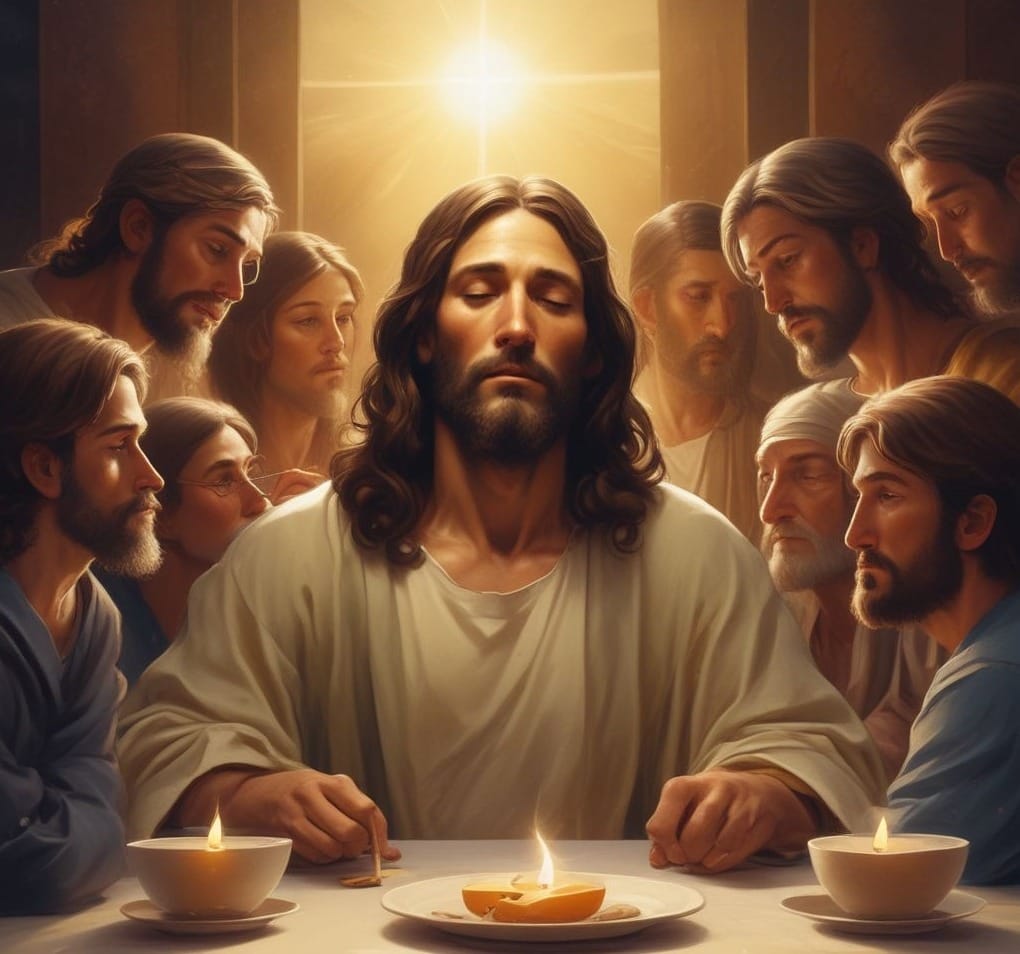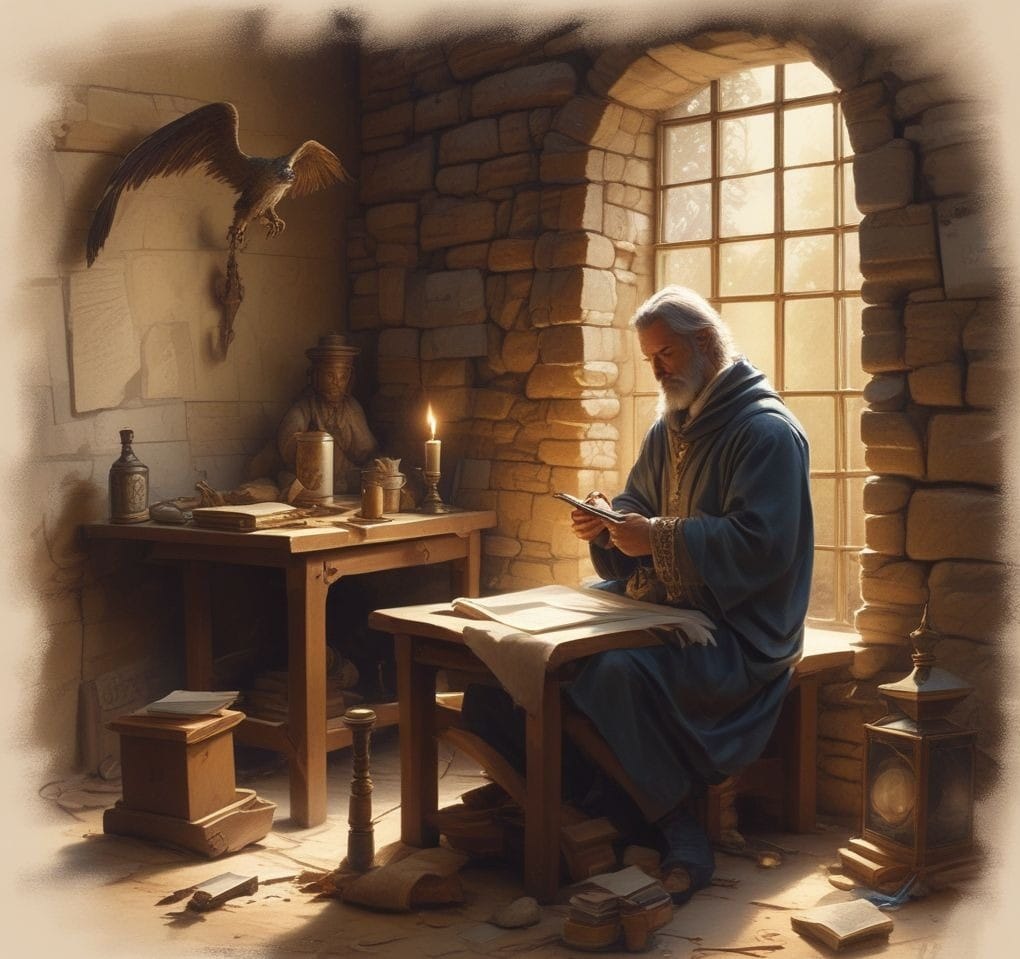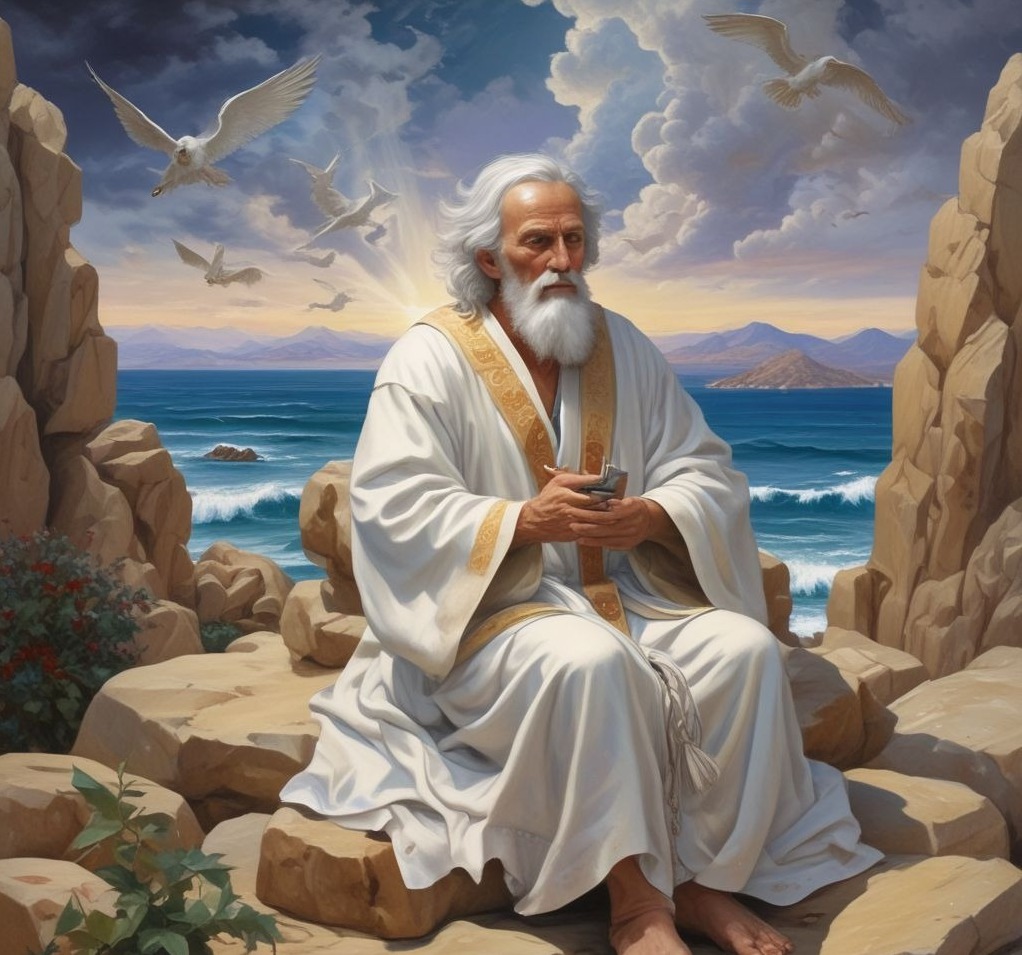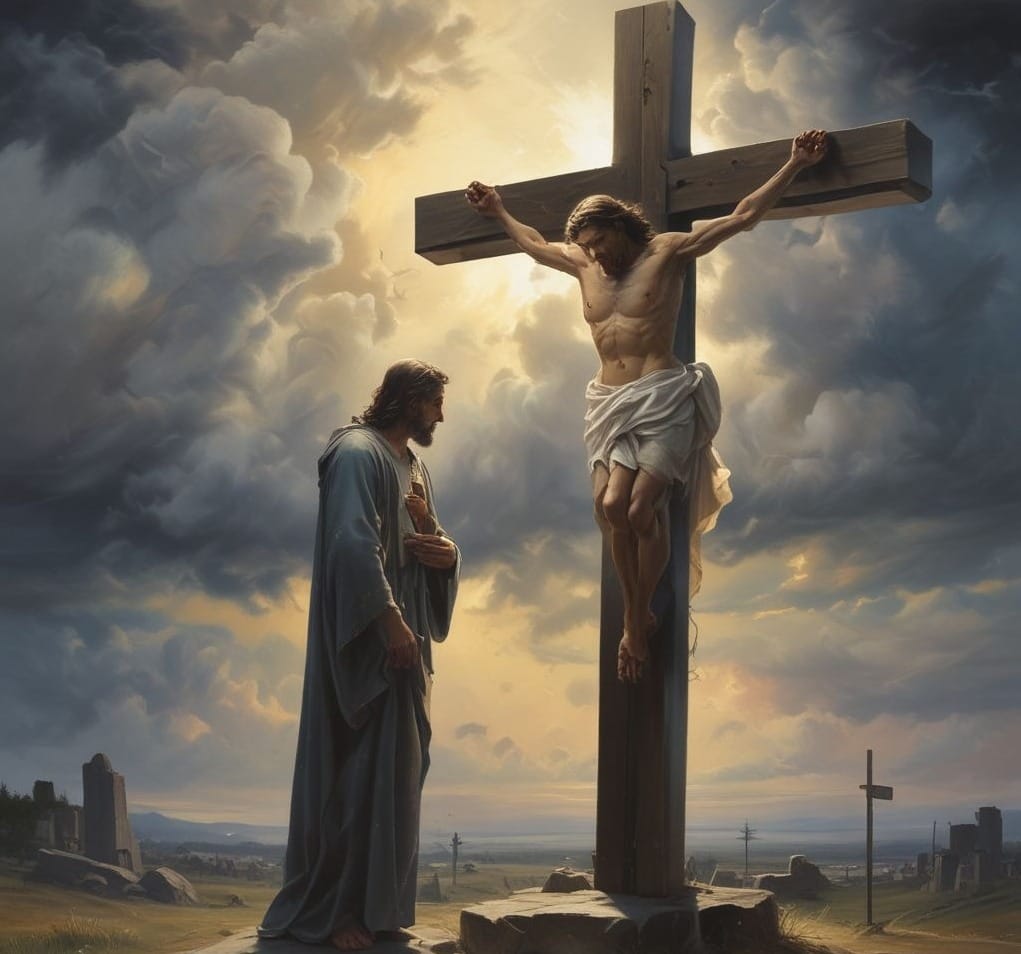Unveiling the Life of John the Beloved: Lesser-Known Stories of Jesus’ Closest Disciple

Introduction
In the annals of Christian history, few figures stand as tall as John the Apostle, often referred to as the Beloved Disciple. His life, intricately woven with that of Jesus Christ, offers a unique window into the early days of Christianity. From his humble beginnings as a Galilean fisherman to his pivotal role as a foundational pillar of the Christian faith, John’s journey is one of devotion, transformation, and profound theological insight. This comprehensive biography explores John’s intimate relationship with Jesus, his authorship of key New Testament texts, and his enduring theological contributions. Along the way, we’ll uncover lesser-known stories and facts that reveal the depth of his character and the breadth of his influence across early Christianity and beyond.
John’s story is not just a historical recounting; it’s a narrative that resonates with themes of love, faith, and divine purpose. Whether you’re a scholar of Christian theology, a curious reader of early church history, or someone seeking inspiration from the apostles of Jesus, this article aims to illuminate the life of John the Beloved Disciple in a way that’s both engaging and accessible.
✨ For more explorations into the Scriptures and insights on God’s divine plan, visit our Bible blog filled with faith-inspired articles.
Table of Contents
Early Life and Calling
A Special Bond: John’s Relationship with Jesus
Authorship and Theological Contributions
The Gospel of John
The Epistles of John
The Book of Revelation
Later Life and Ministry
Lesser-Known Facts and Stories
Legacy and Influence
Conclusion
Early Life and Calling
John the Apostle was born in Galilee, likely in the village of Bethsaida, a bustling fishing community on the northern shore of the Sea of Galilee. He was the son of Zebedee, a fisherman, and Salome, a woman who would later become a devoted follower of Jesus. Alongside his older brother James, John grew up casting nets and mending boats, immersed in the rhythms of a trade that sustained their family and community. Fishing wasn’t merely a job in Galilee—it was a way of life, demanding skill, patience, and resilience.
Some traditions propose an intriguing familial connection: Salome may have been the sister of Mary, the mother of Jesus. If true, this would make John and Jesus cousins, offering a possible explanation for their deep bond. While the New Testament doesn’t explicitly confirm this relationship, it’s a detail that has fueled speculation among scholars and adds a layer of intimacy to John’s story.
John’s life took a radical turn when he encountered Jesus of Nazareth. The Gospel of Matthew captures this transformative moment with vivid simplicity: “Going on from there, he saw two other brothers, James son of Zebedee and his brother John. They were in a boat with their father Zebedee, preparing their nets. Jesus called them, and immediately they left the boat and their father and followed him” (Matthew 4:21-22, NIV). This immediate response reveals John’s openness to a higher calling, a willingness to abandon the familiar for a path of profound purpose.
As one of the first disciples called by Jesus, John stepped into a role that would place him at the heart of the nascent Christian movement. His early life as a fisherman had prepared him for hard work and unpredictability, but nothing could have fully prepared him for the journey ahead—a journey that would intertwine his fate with that of the Messiah and shape the course of early Christianity.
A Special Bond: John’s Relationship with Jesus

Among the twelve apostles, John the Apostle held a distinctive place as the “disciple whom Jesus loved,” a title that appears repeatedly in the Gospel of John (e.g., John 13:23, 19:26). This designation isn’t a boast but a reflection of the extraordinary trust and affection Jesus extended to him. While all the disciples shared a connection with their teacher, John, alongside Peter and James, formed an inner circle privy to some of Jesus’ most intimate and awe-inspiring moments.
The Transfiguration
One such moment was the Transfiguration, a divine revelation of Jesus’ glory. John, Peter, and James accompanied Jesus up a mountain, where “he was transfigured before them. His face shone like the sun, and his clothes became as white as the light” (Matthew 17:2, NIV). Moses and Elijah appeared, conversing with Jesus, and a voice from the heavens declared, “This is my Son, whom I love” (Matthew 17:5). For John, witnessing this event must have solidified his understanding of Jesus’ divine identity—an understanding that would later permeate his Gospel.
The Raising of Jairus’ Daughter
Another exclusive experience was the raising of Jairus’ daughter. When the synagogue leader Jairus pleaded for Jesus to heal his dying child, only Peter, James, and John were allowed to enter the room where the girl lay lifeless. Jesus took her hand and said, “Little girl, I say to you, get up!” (Mark 5:41), and she rose, restored to life. This miracle, witnessed by John, underscored Jesus’ power over death—a theme that would echo in John’s writings about eternal life.
The Last Supper
John’s closeness to Jesus was poignantly displayed at the Last Supper, the final meal Jesus shared with his disciples before his arrest. As they reclined at the table—a common posture for meals in that era—John was positioned next to Jesus, so near that he could lean against him. When Jesus foretold his betrayal, it was John who asked, “Lord, who is it?” (John 13:25), a question prompted by Peter but asked in a moment of quiet confidence between master and disciple.
The Crucifixion
Perhaps the most profound testament to their bond occurred at the foot of the cross. As Jesus endured his crucifixion, most of the disciples had scattered in fear, but John remained, standing beside Mary, Jesus’ mother. In his final moments, Jesus looked down and entrusted Mary to John’s care, saying, “Woman, here is your son,” and to John, “Here is your mother” (John 19:26-27, NIV). From that hour, John took Mary into his home, honoring Jesus’ trust and assuming a role as her protector.
This act wasn’t merely a personal favor; it symbolized John’s emerging leadership within the early Christian community. His presence at the crucifixion, when others fled, highlights his courage and devotion—qualities that would define his ministry in the years to come.
John’s relationship with Jesus wasn’t just one of privilege but of profound responsibility. These moments of closeness shaped his perspective, giving him a front-row seat to the life and mission of the Savior—a perspective he would later share with the world through his writings.
✨ For more explorations into the Scriptures and insights on God’s divine plan, visit our Bible blog filled with faith-inspired articles.
Authorship and Theological Contributions

John the Beloved Disciple’s legacy extends far beyond his personal experiences with Jesus. Through his authorship, he left an indelible mark on Christian theology, crafting texts that have guided believers for nearly two millennia. Traditionally, John is credited with writing the Gospel of John, three epistles (1 John, 2 John, 3 John), and the Book of Revelation. While some modern scholars debate the authorship of these works—suggesting they may stem from a “Johannine community” influenced by John rather than his direct hand—the traditional view attributes them to the apostle himself. Together, these writings weave a tapestry of theological depth, emphasizing Jesus’ divinity, the centrality of love, and the hope of God’s ultimate victory.
The Gospel of John
The Gospel of John stands apart from the Synoptic Gospels (Matthew, Mark, and Luke) for its poetic style and theological richness. Where the Synoptics chronicle Jesus’ actions and parables, John delves into his identity and purpose, presenting him as the eternal Word incarnate. The Gospel opens with a majestic prologue: “In the beginning was the Word, and the Word was with God, and the Word was God. He was with God in the beginning. Through him all things were made” (John 1:1-3, NIV). This declaration establishes Jesus as the divine Logos, preexistent and coequal with God, who took on flesh to dwell among humanity.
John’s Gospel is structured around seven miraculous signs—such as turning water into wine (John 2:1-11) and raising Lazarus from the dead (John 11:1-44)—each pointing to Jesus’ divine authority. It also features seven “I am” statements, where Jesus reveals his identity: “I am the bread of life” (John 6:35), “I am the light of the world” (John 8:12), “I am the resurrection and the life” (John 11:25), and others. These echo God’s name revealed to Moses, “I AM WHO I AM” (Exodus 3:14), linking Jesus to the God of Israel.
Love is a recurring theme, culminating in Jesus’ command at the Last Supper: “A new command I give you: Love one another. As I have loved you, so you must love one another” (John 13:34, NIV). This call to love, rooted in Jesus’ example, became a cornerstone of John’s theology, influencing Christian ethics and community life.
The Gospel’s purpose is explicit: “These are written that you may believe that Jesus is the Messiah, the Son of God, and that by believing you may have life in his name” (John 20:31). For John, belief in Jesus’ divinity isn’t abstract—it’s the pathway to eternal life, a message that has resonated through centuries of Christian thought.
✨ For more explorations into the Scriptures and insights on God’s divine plan, visit our Bible blog filled with faith-inspired articles.
The Epistles of John
John’s three epistles build on the Gospel’s themes, addressing the practical and spiritual needs of early Christian communities. Written in a warm, pastoral tone, they emphasize love, truth, and fellowship while confronting challenges like false teachings.
In 1 John, he writes, “Dear friends, let us love one another, for love comes from God. Everyone who loves has been born of God and knows God. Whoever does not love does not know God, because God is love” (1 John 4:7-8, NIV). Here, John defines love as the essence of God’s nature and the hallmark of authentic faith. He also reassures believers of their security in Christ: “I write these things to you who believe in the name of the Son of God so that you may know that you have eternal life” (1 John 5:13).
The shorter epistles, 2 John and 3 John, address specific situations. In 2 John, he warns against deceivers who deny Jesus’ incarnation, urging believers to “watch out that you do not lose what we have worked for” (2 John 1:8). In 3 John, he commends hospitality and faithfulness, praising Gaius while rebuking Diotrephes for his pride. These letters reveal John’s role as a shepherd, guarding the flock against error and encouraging unity.
The Book of Revelation

The Book of Revelation, composed during John’s exile on the island of Patmos, is a visionary masterpiece of apocalyptic literature. Addressed to seven churches in Asia Minor, it offers comfort to persecuted Christians through vivid imagery of Christ’s triumph over evil. John describes seeing “one like a son of man” seated on a throne (Revelation 1:13-16), followed by scenes of seals, trumpets, and bowls that unveil God’s judgment and redemption.
The book’s central message is hope: “The kingdom of the world has become the kingdom of our Lord and of his Messiah, and he will reign for ever and ever” (Revelation 11:15). Its climax, the New Jerusalem descending from heaven (Revelation 21-22), paints a picture of eternal peace where “God will wipe every tear from their eyes” (Revelation 21:4).
Scholars debate whether Revelation was written by John the Apostle or another figure, often called John of Patmos. Linguistic differences between Revelation and John’s other works fuel this discussion, yet tradition holds that the Apostle, inspired by the Spirit, penned this final testament. Regardless, its impact on Christian eschatology—beliefs about the end times—is undeniable.
John’s writings collectively form a theological foundation for early Christianity, blending profound doctrine with practical application. His emphasis on Jesus as the divine Word, the command of Christian love, and the assurance of God’s victory have shaped the faith’s identity and mission.
✨ For more explorations into the Scriptures and insights on God’s divine plan, visit our Bible blog filled with faith-inspired articles.
Later Life and Ministry
After Jesus’ resurrection and ascension, John the Beloved Disciple emerged as a key leader in the early church. His ministry bridged the events of Jesus’ life with the spread of Christianity across the Roman Empire, cementing his role as both witness and teacher.
The Early Church in Jerusalem
John was present at Pentecost, when the Holy Spirit descended on the disciples in tongues of fire, empowering them to proclaim the gospel (Acts 2:1-4). Alongside Peter, he performed miracles, such as healing a lame man at the temple gate called Beautiful (Acts 3:1-10). This act drew a crowd, leading to their arrest and a bold defense before the Sanhedrin: “Salvation is found in no one else, for there is no other name under heaven given to mankind by which we must be saved” (Acts 4:12). John’s courage in these early days showcased his transformation from a fiery fisherman to a steadfast apostle.
Ministry in Ephesus
Tradition holds that John later relocated to Ephesus, a thriving metropolis in Asia Minor (modern-day Turkey). There, he served as a bishop or elder, guiding the Christian community and writing his Gospel and epistles. Ephesus was a strategic hub, home to the Temple of Artemis and a melting pot of cultures, making it an ideal base for spreading the gospel.
One vivid story from this period, recorded by Irenaeus, involves John’s encounter with Cerinthus, a heretic who denied Jesus’ divinity. Upon entering a bath-house and learning Cerinthus was inside, John reportedly fled, crying, “Let us fly, lest even the bath-house fall down, because Cerinthus, the enemy of the truth, is within!” This dramatic exit underscores John’s zeal for doctrinal purity, a concern echoed in his epistles.
Mentorship and Influence
John’s ministry extended through his disciples, notably Polycarp, bishop of Smyrna, and Ignatius of Antioch, both towering figures in early Christianity. Polycarp, in turn, mentored Irenaeus, creating a chain of teaching that preserved John’s insights. These relationships highlight John’s role as a bridge between the apostolic era and the next generation of church leaders.
Exile on Patmos
In his later years, John faced exile to Patmos, a small, rocky island in the Aegean Sea, likely under Emperor Domitian’s persecution of Christians (circa AD 95). It was here, amid isolation, that he received the visions of Revelation. Far from silencing him, exile amplified his voice, as the book’s message spread to encourage beleaguered churches.
John’s later life reflects a shift from active witness to reflective author and mentor. His leadership in Ephesus, his stand against heresy, and his endurance in exile demonstrate a life wholly devoted to Christ and his church.
Lesser-Known Facts and Stories
While John the Apostle’s major contributions are well-known, a wealth of lesser-known stories and traditions enrich his portrait, revealing a man of passion, resilience, and unexpected influence.
Boanerges: Sons of Thunder
Jesus nicknamed John and James “Boanerges,” or “Sons of Thunder” (Mark 3:17), a moniker hinting at their fiery temperaments. This is vividly illustrated in Luke 9:54, when they asked, “Lord, do you want us to call fire down from heaven to destroy them?” after a Samaritan village rejected Jesus. Over time, John’s zeal matured into a fervent love, but this early glimpse shows the raw energy he brought to his discipleship.
The Boiling Oil Miracle
A striking tradition, recounted by Tertullian in the late 2nd century, claims John survived an attempt on his life in Rome. Ordered by Domitian to be plunged into boiling oil before a crowd at the Latin Gate, John emerged unscathed. This miracle reportedly led to conversions among the spectators and his subsequent exile to Patmos rather than execution. Though not in Scripture, the story underscores John’s reputation as a divinely protected figure.
The Empty Tomb in Ephesus
John is believed to have died in Ephesus around AD 100, during the reign of Trajan, making him the longest-lived Apostle. His tomb, in the Basilica of St. John, became a pilgrimage site. When opened centuries later, it was found empty, save for a fine dust likened to manna. Some interpreted this as evidence of bodily assumption into heaven, akin to Elijah, though mainstream Christianity views it as a mystery tied to his legacy.
Artistic Depictions
In medieval and Renaissance art, John is often portrayed as a youthful, beardless figure, sometimes with delicate features. This depiction, seen in works like Leonardo da Vinci’s The Last Supper, has sparked speculation—most famously in The Da Vinci Code, which suggests the figure beside Jesus is Mary Magdalene. Scholars dismiss this, affirming it as John, but the artistic choice reflects his unique status as the Beloved Disciple.
Influence Beyond Christianity
John’s reach extends beyond Christian circles. The Druze, a Middle Eastern religious group, venerate him as a prophet alongside other biblical figures. Freemasonry honors John the Apostle and John the Baptist as patron saints, celebrating their feast days (December 27 and June 24). These connections highlight his broader cultural resonance.
Latter-day Saint Belief
In Mormon theology, John is seen as an immortal figure, based on John 21:22-23, where Jesus says, “If I want him to remain alive until I return, what is that to you?” The Church of Jesus Christ of Latter-day Saints teaches that John, along with three Nephite disciples, was granted a prolonged earthly mission until Christ’s return—an interpretation unique to their tradition.
Other Anecdotes
The Cup of Poison: A legend from the Acts of John (an apocryphal text) claims John drank from a poisoned cup to prove God’s power, surviving while others died, reinforcing his miraculous aura.
The Partridge Story: Another tale describes John taming a partridge, symbolizing his gentle nature in old age, a contrast to his youthful thunder.
These stories, whether historical or legendary, paint John as a multifaceted figure—passionate yet tender, resilient yet reflective—whose life captivated imaginations across centuries.
✨ For more explorations into the Scriptures and insights on God’s divine plan, visit our Bible blog filled with faith-inspired articles.
Legacy and Influence
John the Beloved Disciple’s impact on Christianity and beyond is immeasurable. His writings, ministry, and personal example have left a lasting imprint on theology, ethics, and culture.
Theological Foundations
The Gospel of John introduced the concept of Jesus as the Word made flesh, a doctrine central to Christian belief in the Incarnation. This portrayal of Christ’s divinity and humanity in unity has shaped creeds like the Nicene Creed and countless theological works. John’s focus on eternal life through faith—“Whoever believes in the Son has eternal life” (John 3:36)—offers believers assurance and hope.
His epistles elevated love to a divine imperative, defining it as the essence of God and the mark of true discipleship. This emphasis influenced Christian ethics, from the early church’s communal life to modern calls for compassion and unity.
Revelation, with its apocalyptic vision, has fueled Christian eschatology, inspiring art, literature, and movements anticipating Christ’s return. Its imagery—of the Lamb, the New Jerusalem, and the defeat of evil—remains a powerful symbol of ultimate redemption.
Early Church Leadership
John’s mentorship of Polycarp and Ignatius ensured his teachings endured beyond his lifetime. Polycarp’s martyrdom and Ignatius’ letters carried Johannine themes forward, strengthening the church against persecution and heresy. As the last surviving Apostle, John served as a living link to Jesus, grounding the faith in eyewitness testimony.
Cultural Resonance
John’s life has inspired countless artistic and literary works. From Byzantine icons to Handel’s Messiah (which draws on Revelation), his influence permeates Western culture. His feast day, December 27, is celebrated in many Christian traditions, keeping his memory alive.
In modern times, John’s story continues to captivate. Whether through scholarly debates about his authorship or popular reinterpretations like The Da Vinci Code, he remains a figure of intrigue and reverence.
Enduring Message
At its core, John’s legacy is his message of love and faith. His call to “love one another” transcends time, challenging believers to reflect Christ’s love in a fractured world. His vision of a reconciled creation, where God dwells with humanity, offers a hope that endures.

Conclusion
John the Beloved Disciple stands as a towering figure in Christian history, his life a testament to the transformative power of faith, love, and devotion. From his early days mending nets on the Sea of Galilee to his final visions on Patmos, John’s journey reflects an unwavering commitment to Jesus and his mission. His writings—the Gospel of John, the epistles, and Revelation—illuminate the nature of God and the call to live in love, truths that have guided generations.
Uncovering the lesser-known facets of John’s life—his fiery youth, his miraculous escapes, his quiet mentorship—reveals a man whose depth matched his influence. He was not just a witness to Christ but a vessel of his message, a bridge between the Savior and the church he helped build.
As we reflect on John the Apostle, we’re reminded of his enduring relevance. His story invites us to explore the roots of early Christianity, to wrestle with the mysteries of faith, and to embrace the love that he so passionately proclaimed. In the end, John’s life is a beacon, pointing not to himself, but to the One he loved—the Word made flesh, the light of the world.
✨ For more explorations into the Scriptures and insights on God’s divine plan, visit our Bible blog filled with faith-inspired articles.
